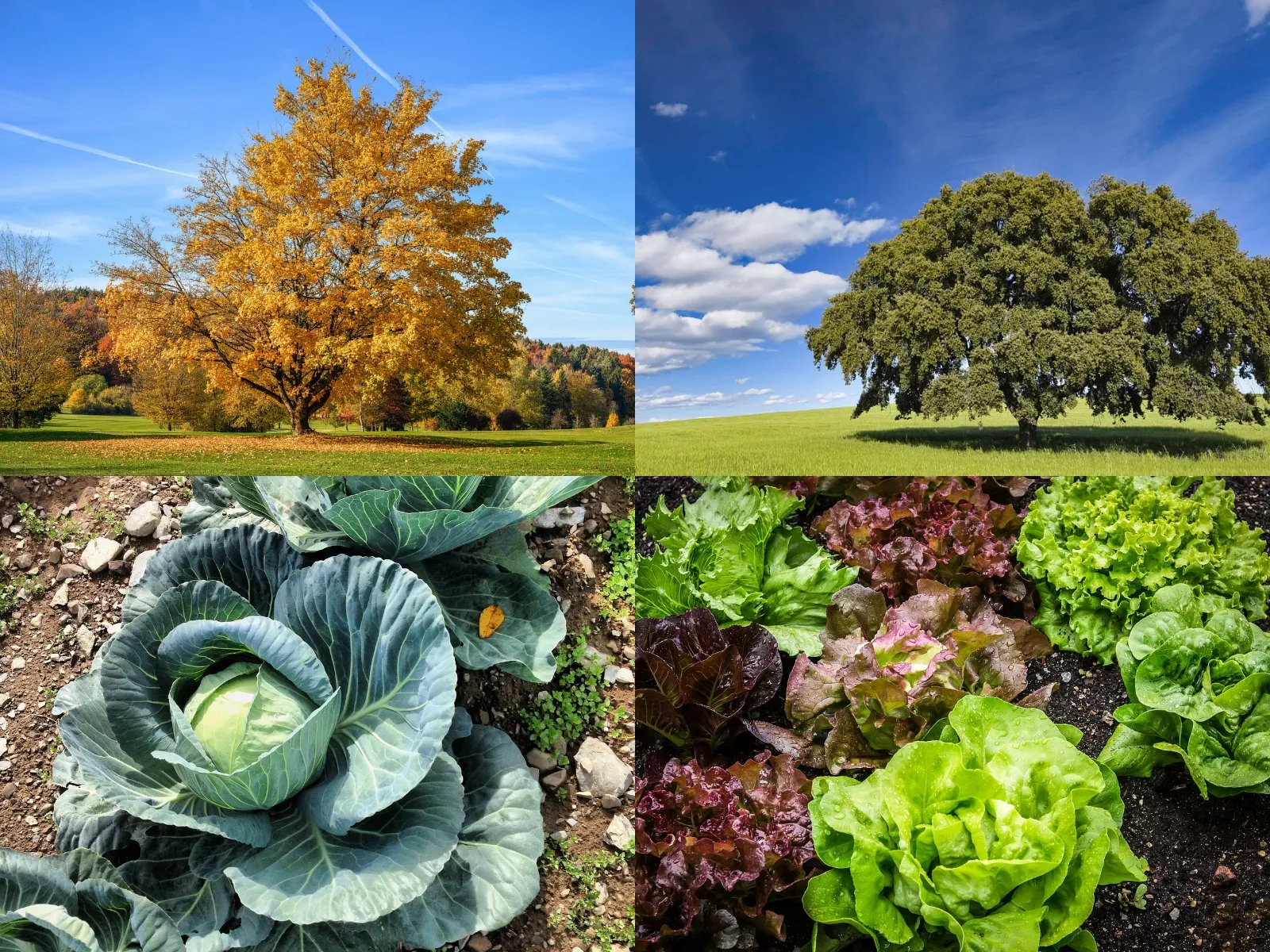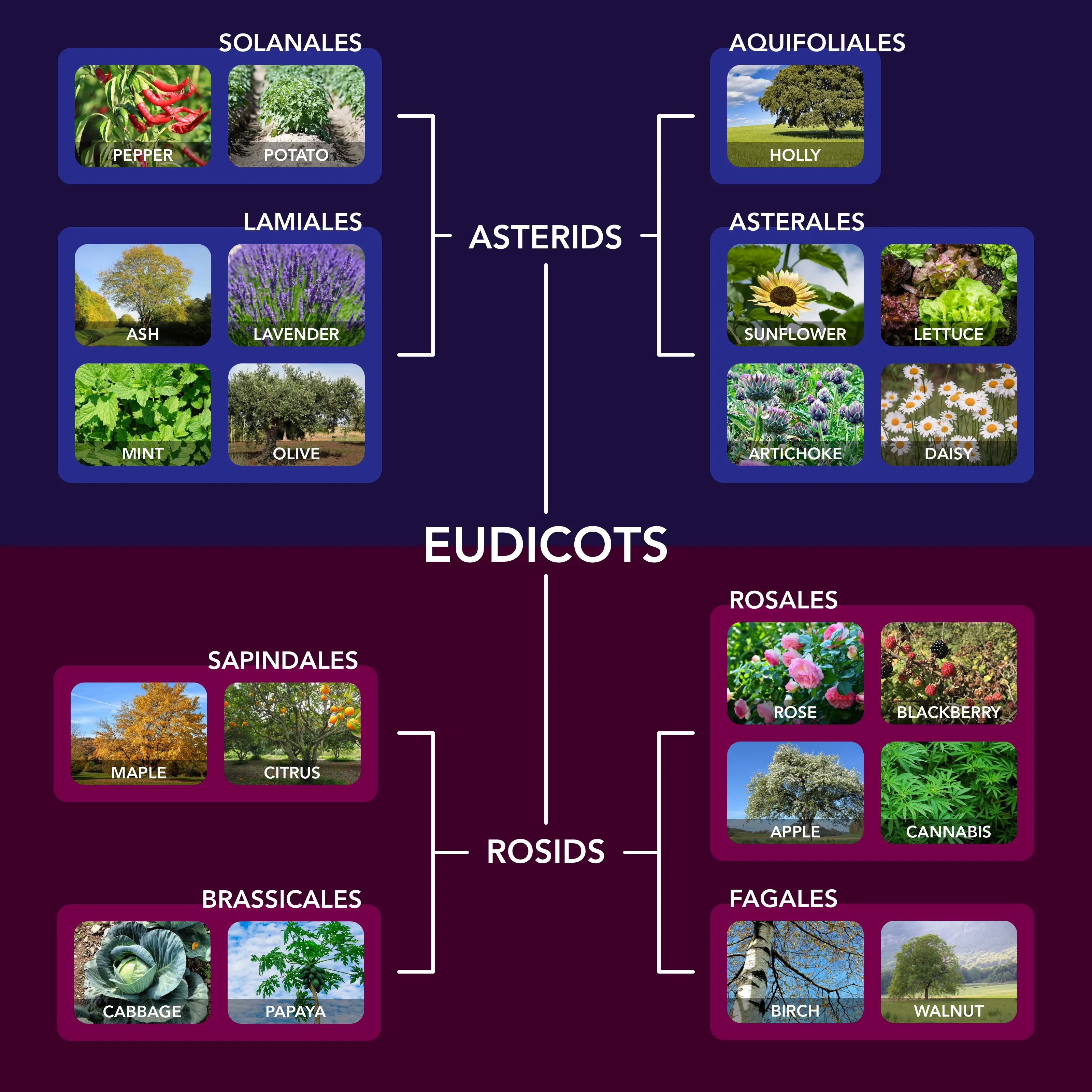
Between cabbage, lettuce, maple, and holly, two plants are in the rosid clade (related to roses) and two are in the asterid clade (related to sunflowers). Can you guess which is which?
I would have guessed that the trees might be related to a woody rose bush, while the leafy greens would be closer to broad-leaved sunflowers. I would have been wrong. Plants are much weirder than that.
In fact, cabbages are much more closely related to maple trees than they are to lettuce; cabbage and maples are both rosids. Meanwhile, holly trees and lettuce are both asterids.
As it turns out, a lot of the categories we use to think about plants — trees, bushes, berries, vegetables, and so on — are not particularly unique from an genetic perspective. Biologist Georgia Ray explains:
On the evolutionary tree of plants, trees are regularly interspersed with things that are absolutely, 100% not trees. This means that, for instance:
- The common ancestor of a maple and a mulberry tree was not a tree.
- The common ancestor of a stinging nettle and a strawberry plant was a tree.
- And this is true for most trees or non-trees that you can think of.
Because of this, there are plenty of plant lists you can play “One of these things is not like the others” with where the intuitive answer is very different from the phylogenetic answer.
- Blackberries, strawberries, blueberries, apples.1
- Almonds, walnuts, brazil nuts, stinking corpse flower.2
- Palm tree, papaya tree, banana tree, asparagus.3

Trees are not a family, they’re a strategy.
Wood is a strategy. Fruit is a strategy. A fish is also a strategy.